Abstract
Poor weight gain observed in preterm infants who were fed expressed breast milk compared with those fed a cows' milk formular prompted a detailed study of early postnatal growth in preterm infants fed these two milks. 68 infants were divided into two categories by gestational age at birth (i) 28-32 weeks (n=28), (ii) 33-36 weeks (n=40). They were randomly allocated to a feed of expressed breast milk or a milk formula (Ostermilk 1). Rates of weight gain, linear growth, and head circumference growth were evaluated over two periods: birth-1 month, 1-2 months. The younger group who were fed breast milk showed slower overall growth rates over the first month than those fed formula. In the second month, and for the older infants over both of the 2-monthly periods, growth rates were similar in the two feeding regimens. It is concluded that expressed breast milk is inadequate for the growth of very immature preterm infants during early postnatal life.
Full text
PDF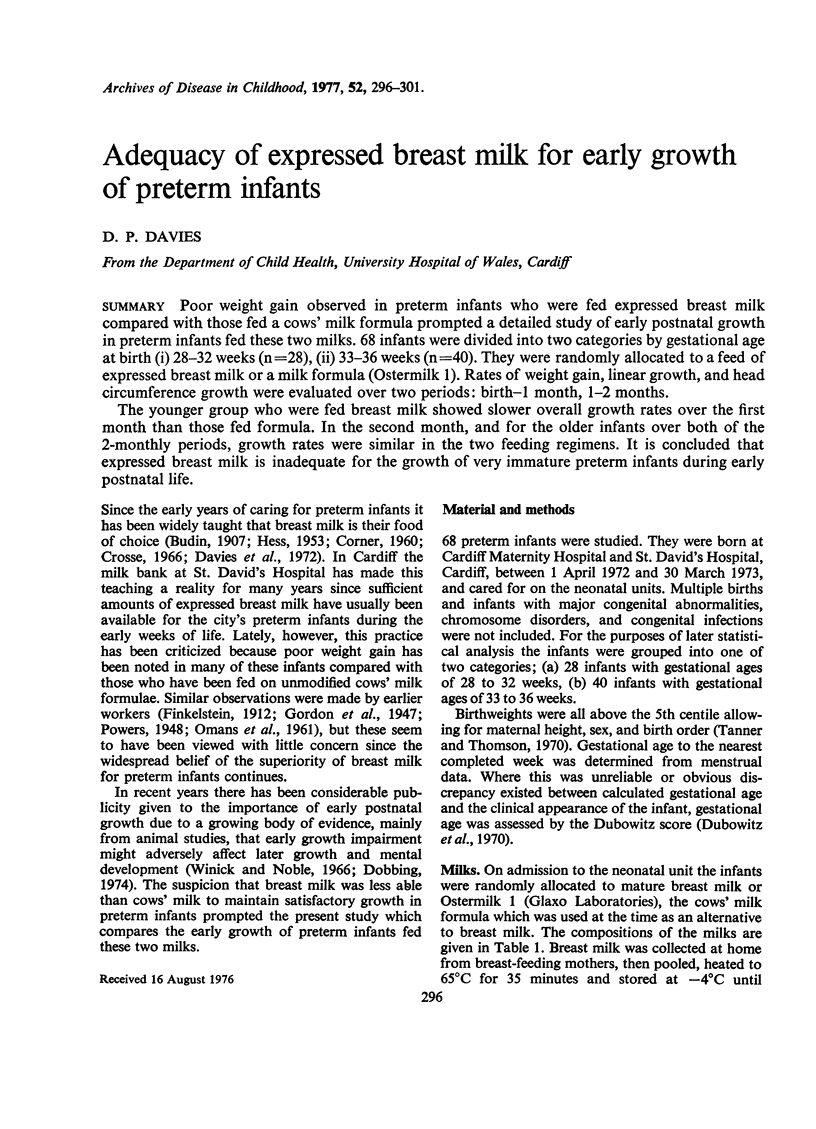
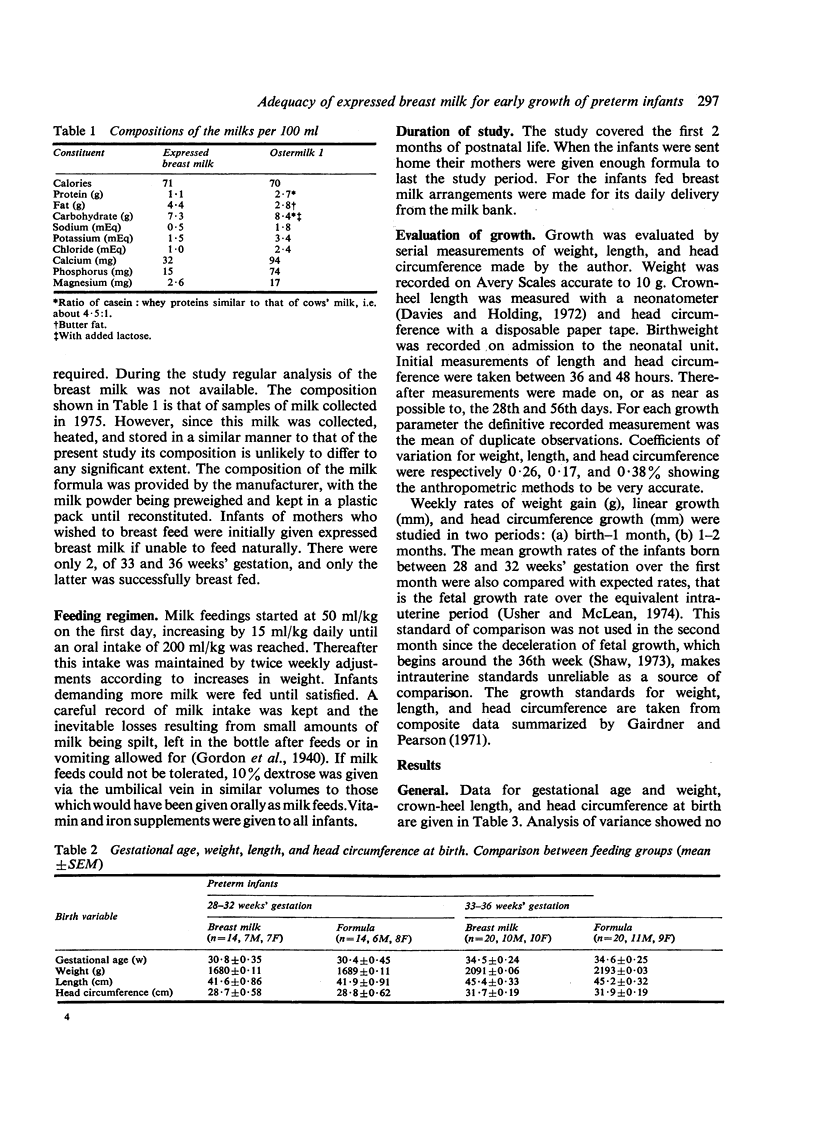
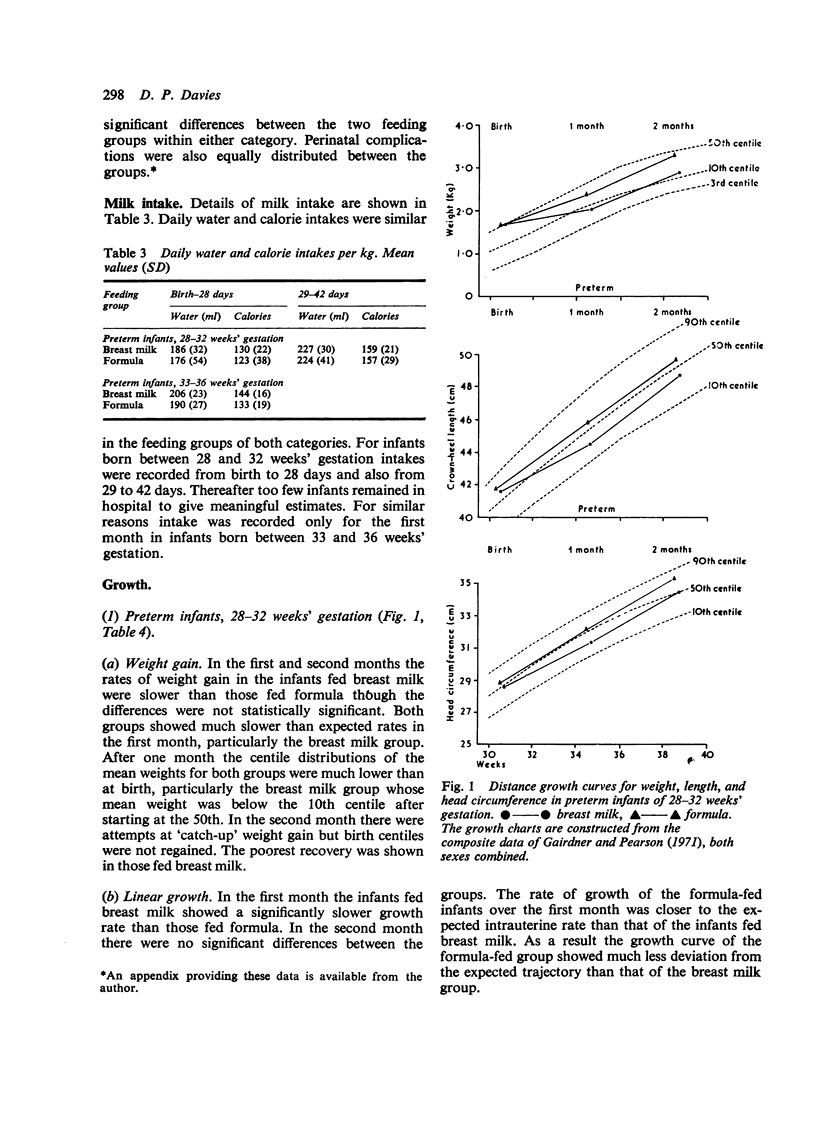
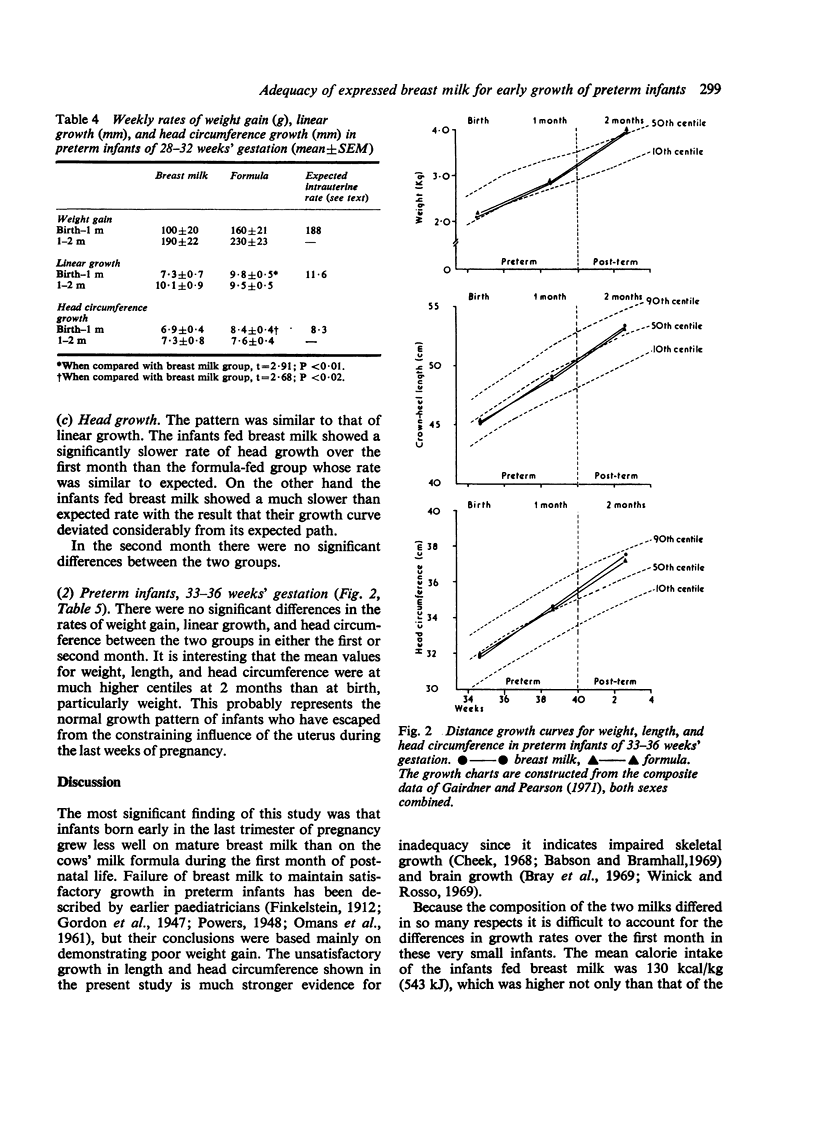
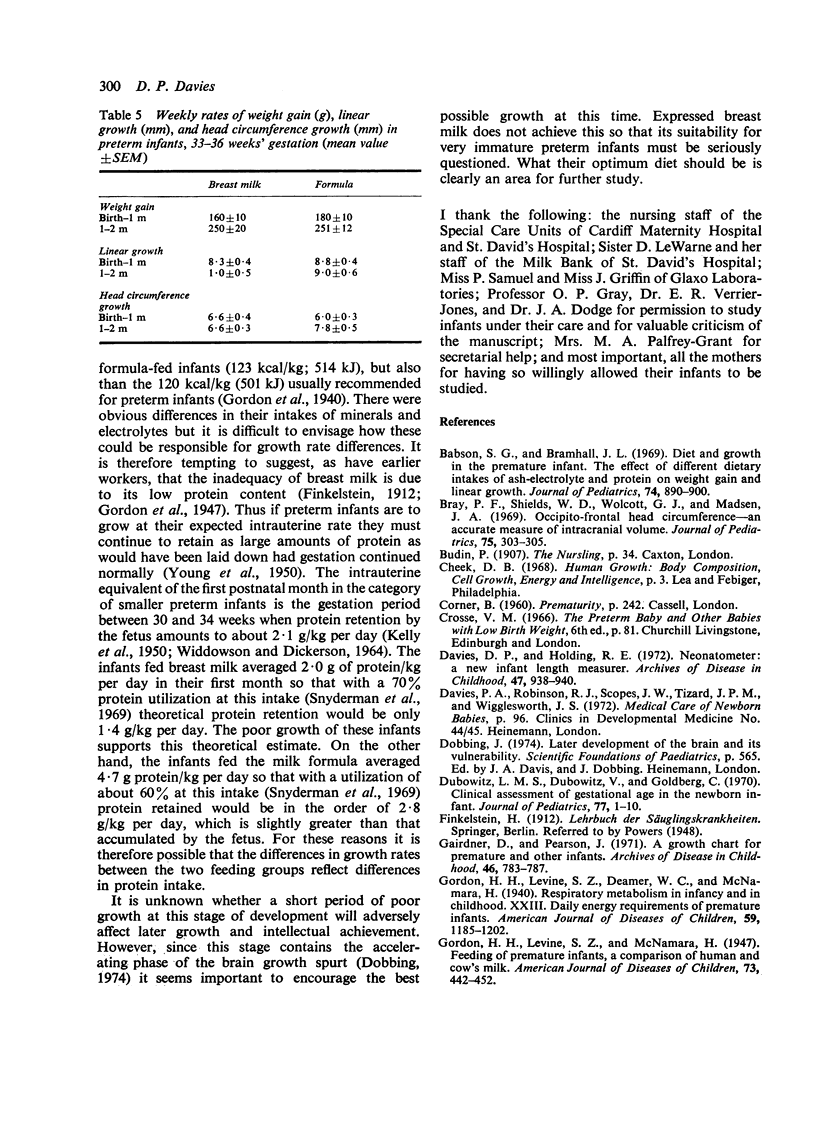
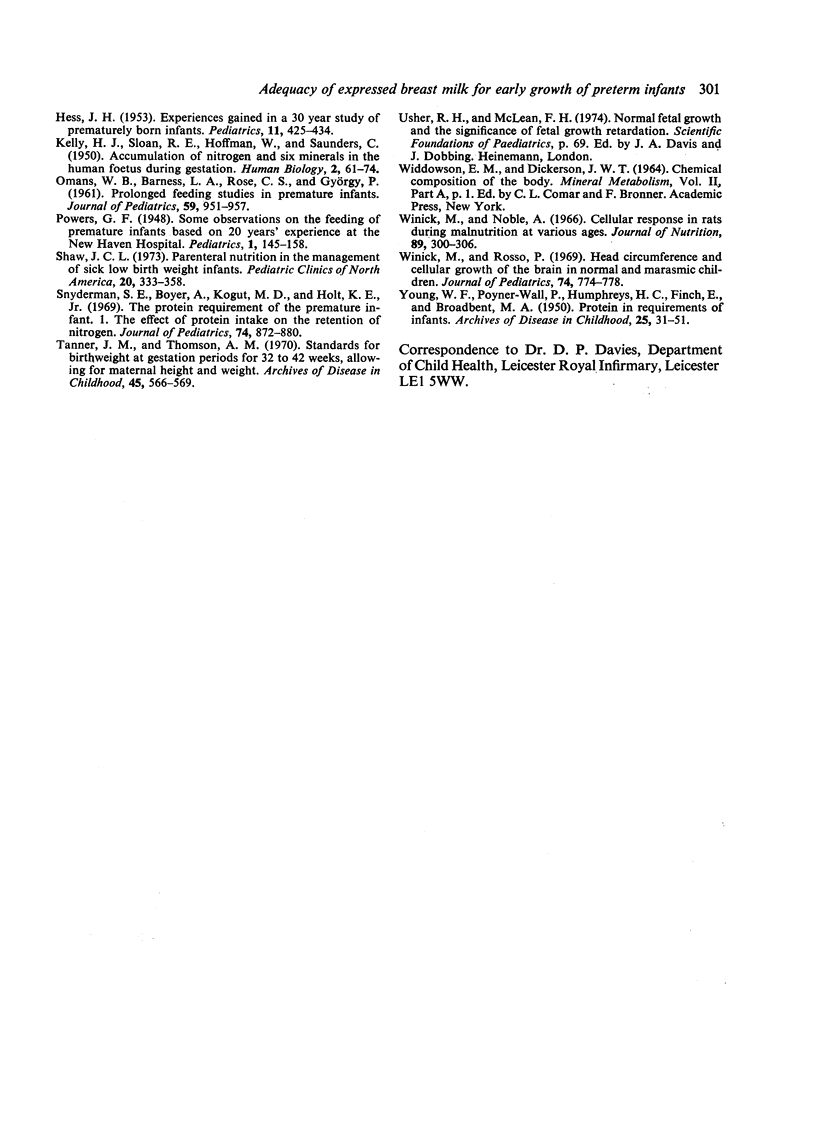
Selected References
These references are in PubMed. This may not be the complete list of references from this article.
- Babson S. G., Bramhall J. L. Diet and growth in the premature infant. The effect of different dietary intakes of ash-electrolyte and protein on weight gain and linear growth. J Pediatr. 1969 Jun;74(6):890–900. doi: 10.1016/s0022-3476(69)80223-4. [DOI] [PubMed] [Google Scholar]
- Bray P. F., Shields W. D., Wolcott G. J., Madsen J. A. Occipitofrontal head circumference--an accurate measure of intracranial volume. J Pediatr. 1969 Aug;75(2):303–305. doi: 10.1016/s0022-3476(69)80404-x. [DOI] [PubMed] [Google Scholar]
- Davies D. P., Holding R. E. Neonatometer: a new infant length measurer. Arch Dis Child. 1972 Dec;47(256):938–940. doi: 10.1136/adc.47.256.938. [DOI] [PMC free article] [PubMed] [Google Scholar]
- Dubowitz L. M., Dubowitz V., Goldberg C. Clinical assessment of gestational age in the newborn infant. J Pediatr. 1970 Jul;77(1):1–10. doi: 10.1016/s0022-3476(70)80038-5. [DOI] [PubMed] [Google Scholar]
- Gairdner D., Pearson J. A growth chart for premature and other infants. Arch Dis Child. 1971 Dec;46(250):783–787. doi: 10.1136/adc.46.250.783. [DOI] [PMC free article] [PubMed] [Google Scholar]
- HESS J. H. Experiences gained in a thirty year study of prematurely born infants. Pediatrics. 1953 May;11(5):425–434. [PubMed] [Google Scholar]
- OMANS W. B., BARNESS L. A., ROSE C. S., GYORGY P. Prolonged feeding studies in premature infants. J Pediatr. 1961 Dec;59:951–957. doi: 10.1016/s0022-3476(61)80327-2. [DOI] [PubMed] [Google Scholar]
- Snyderman S. E., Boyer A., Kogut M. D., Holt L. E., Jr The protein requirement of the premature infant. I. The effect of protein intake on the retention of nitrogen. J Pediatr. 1969 Jun;74(6):872–880. doi: 10.1016/s0022-3476(69)80221-0. [DOI] [PubMed] [Google Scholar]
- Tanner J. M., Thomson A. M. Standards for birthweight as gestation periods from 32 to 42 weeks, allowing for maternal height and weight. Arch Dis Child. 1970 Aug;45(242):566–569. doi: 10.1136/adc.45.242.566. [DOI] [PMC free article] [PubMed] [Google Scholar]
- Winick M., Noble A. Cellular response in rats during malnutrition at various ages. J Nutr. 1966 Jul;89(3):300–306. doi: 10.1093/jn/89.3.300. [DOI] [PubMed] [Google Scholar]
- Winick M., Rosso P. Head circumference and cellular growth of the brain in normal and marasmic children. J Pediatr. 1969 May;74(5):774–778. doi: 10.1016/s0022-3476(69)80140-x. [DOI] [PubMed] [Google Scholar]


